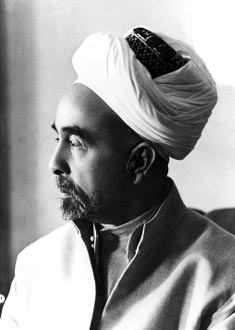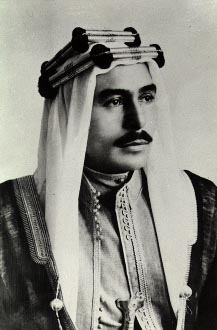 |
Keys
to the Kingdom National Anthem The Office History |
After the successful defense of Arab East Jerusalem by the Arab Legion, King Abdullah traveled regularly to al-Aqsa mosque there to participate in the Friday prayers. Friday, July 20, 1951 was no exception, and the Jordanian monarch set off for prayers in the company of his grandson Prince (later King) Hussein. As he approached the mosque, a lone assailant stepped forward and killed the venerable king. The killer also fired a shot at the young Prince Hussein, but the bullet ricocheted off a medal on his chest. In his autobiography, Uneasy Lies the Head, King Hussein wrote of the experience: “On that terrible day . . . I learned the importance of death; that when you have to die, you die, for it is God’s judgement. Only thus have I found the particular inner peace granted to those who do not fear death.” |
 His Majesty King Abdullah bin al-Hussein, circa 1950. © Royal Hashemite Court Archives |
|
 His Majesty King Talal bin Abdullah, circa 1951. © Royal Hashemite Court Archives |
Following the martyrdom of King Abdullah, the Jordanian throne passed to Crown Prince Talal, the late king’s eldest son. King Talal assumed the monarchy on September 6, 1951. Due to health reasons, however, King Talal abdicated the throne less than a year later, on August 11, 1952, in favor of his eldest son Prince Hussein, who had been made heir apparent on September 9, 1951. During his tenure, King Talal initiated the development of a new, liberalized constitution. This document made the government collectively, and the ministers individually, responsible before parliament. It was formally ratified on January 1, 1952. |
| According to the Jordanian constitution, Prince Hussein could not assume kingly duties until he reached the age of eighteen by the Muslim calendar. Therefore, a Regency Council performed his functions until he came of age and assumed his constitutional powers on May 2, 1953. The smoothness with which the reins of power were transferred through Abdullah, Talal and Hussein was remarkable, indicating the extent to which King Abdullah had succeeded in putting the Jordanian monarchy in constitutional order. |